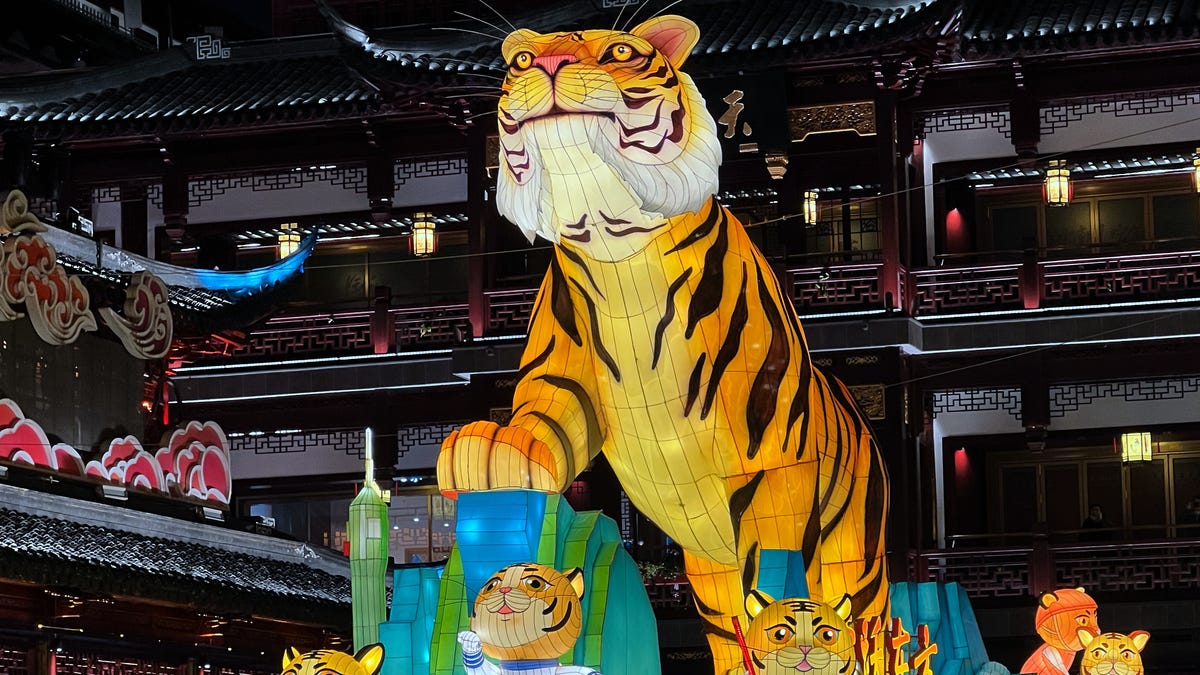Context
-
The Year of the Ox has given way to the Year of the Tiger, and the celebrations will culminate with the Lantern Festival.
-
Millions of people have started to celebrate the Chinese lunar new year on Tuesday (February 1), and you may have even received some good wishes in your mailboxes starting from the new year’s eve.
About Year of the Tiger /Chinese New Year
- Chinese New Year celebrations traditionally end after 15 days, starting on Chinese New Year’s Eve and continuing till the Lantern Festival.
- This year, the Lunar New Year celebrations are being held between January 31 and February 15.

Credit: CNET
- This year, the Lunar New Year celebrations are being held between January 31 and February 15.
-
Since the Chinese calendar is a combination of solar and lunar movements, the New Year arrives on a different date every year.
-
The festival is celebrated by millions of people across the world, from China all the way to North America, including in India, wherever Chinese communities are found.
Why is this festival called the Chinese New Year?
- Countries across Asia have their own New Years, with their own celebrations, with their own names for the festival, that coincide with the festival in China.
- The popularity of the name notwithstanding, clubbing all these celebrations under the label of ‘Chinese’ is in fact not accurate. Over the past few years, many people have tried consciously to use the more inclusive term ‘Lunar New Year’.
- In China itself, the festival is popularly known as the Spring Festival, because it marks the beginning of the new season.
- In South Korea, it is called Seollal, and it marks the first day of the Korean calendar.
- The Vietnamese celebrate Tết, and Tibetans celebrate Losar.
- In Mongolia, it is called Tsagaan Sar, and it marks the first day in the Mongolian lunisolar calendar.
- Taiwan, Singapore, Malaysia, and other countries in the region also celebrate the festival, both as large public celebrations in neighbourhoods, as well as privately, especially if they have groups of people from countries where the festival is traditionally marked.
- Japan seems to be an exception to the list of countries in the region that celebrate the festival.
- The one exception though is the island of Okinawa, which has held on to its unique Okinawan culture, and its traditional Lunar New Year customs.
In India
- In India, common foods eaten during the festival include fish preparations, dumplings, spring rolls and various meat preparations. Over generations, Chinese communities living in India have adapted and incorporated Indian spices and ingredients into classic recipes, resulting in the creation of a unique Indian-Chinese cuisine.
Visit Abhiyan PEDIA (One of the Most Followed / Recommended) for UPSC Revisions: Click Here
IAS Abhiyan is now on Telegram: Click on the Below link to Join our Channels to stay Updated
IAS Abhiyan Official: Click Here to Join
For UPSC Mains Value Edition (Facts, Quotes, Best Practices, Case Studies): Click Here to Join
